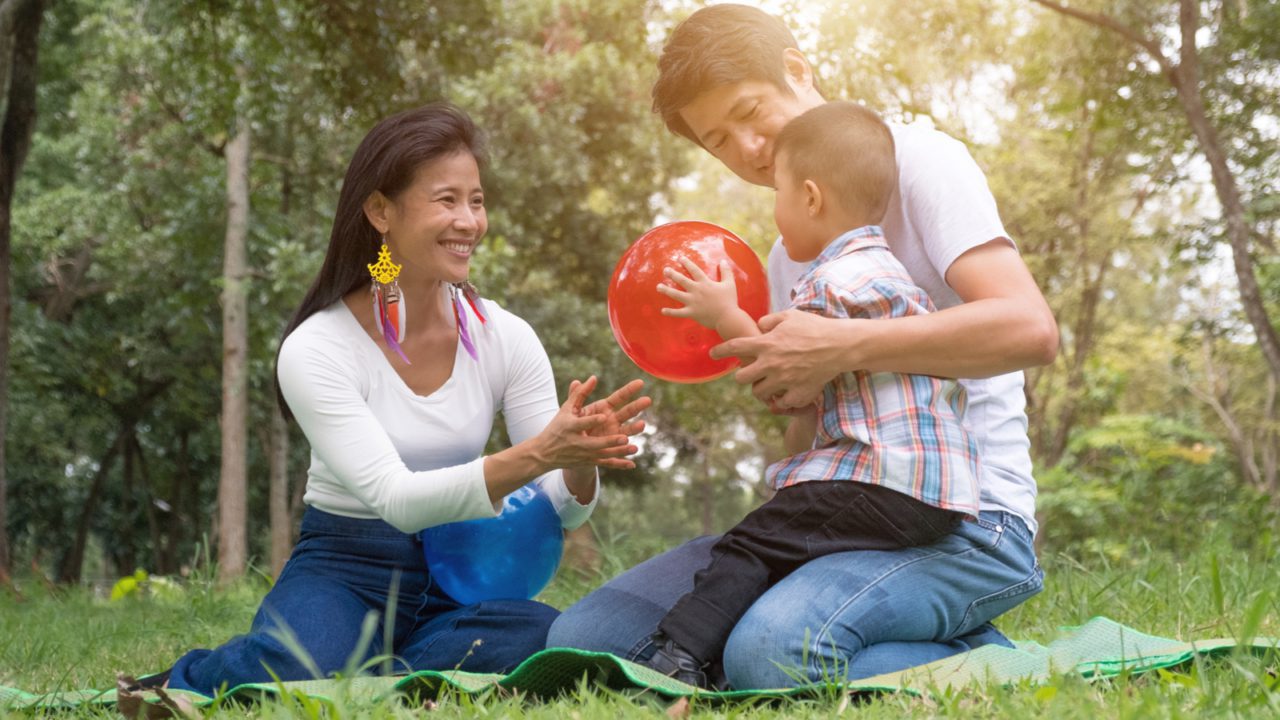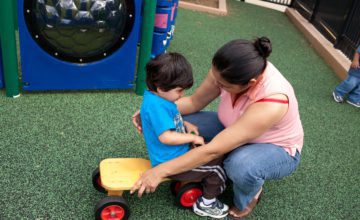1. Try a “Family 15.”
Spend 15 minutes outside each day as a family, no matter the weather. Let your child take the lead and show you what interests him. Even if you’re not a fan of the great outdoors, keep in mind your child is a fan of everything: a squirrel chattering in a tree, a bird perched on a power line, a colorful leaf.
2. See the world through your child’s eyes.
Your 2-year-old loves your phone, so make it part of your outdoor play. Tell your little one that the two of you are going on a photo safari. As you explore the park or neighborhood, she can tell you what to photograph. When you get back inside, scroll through the pics and talk about your adventures together.
3. Indoors or out, try active games that encourage back-and-forth play.
Think about beanbags and balls to roll, toss, and kick to each other. Taking turns helps you and your child tune in to each other and gets your child used to sharing. Another idea: Play “stop and go” games (color one side of a paper plate red and the other green; take turns stopping and going down a hallway) to nurture skills like self-control.
4. Indoors, set the stage for active fun. Try these activities with items from around the house:
- Cupcake Carry
Materials: cupcake tin; spatula or kitchen tongs; small blocks
To play: Dump the blocks on the floor, and have your toddler use the spatula or kitchen tongs to move the block “cupcakes” from the floor to the cupcake tin. - Dinosaur Eggs
Materials: 10-20 plastic eggs (or egg shapes cut from paper); basket or plastic bowl
To play: Place the eggs around the play area, and put the basket “nest” in a corner of the room. Tell your toddler that he needs to collect all the dinosaur eggs and put them in the nest as fast as he can. - So Fast
Materials: None
To play: Choose a place where your toddler can run indoors—down a long hallway or from one room to another and back. Ask your toddler if she wants to race. Let her run as fast as she can, as you count out loud the seconds (this doesn’t have to be precise). Let her know that she was SO fast! See if she wants to try again, but this time, ask her to twirl, jump or gallop like a pony down the hall. This game is so simple and yet toddlers love it, especially when you make a big deal about their speed and skills. Just keep suggesting different ways to move down the hall until they get tired or bored. - Ball Ramp
Materials: long, narrow piece of cardboard; small balls for indoor play; basket or bin; optional yardstick (taped to the underside of the cardboard to make it sturdier)
To play: Help your children set up a ramp by leaning the cardboard at an angle against a chair, couch or low table. Send balls down the ramp to see how far they go (bonus is that kids have to chase them to play again). Try different kinds of balls (or toy cars) to discover which roll farthest.
5. Make active play part of everyday routines.
Home from the market? Ask your toddler to push the bag of milk in front of the refrigerator or take the cereal boxes out of the bag and hand them to you. When you make the bed, let your toddler sit on top while you shake the sheet over his head. Give your child a paper towel and squeeze bottle filled with water, and let him wash a table or chair. Ask your child to help by pushing the laundry basket in front of the washer while you drop the laundry inside. Find playful, active ways to include your child in these everyday routines to keep them close and connected with you—plus, they learn that helping out is fun, too.





